#st mary's-st peter's church
Text

Baby Mary's Grave
Grave marker for Mary Molian, who died August 26, 1852, aged 13 months, 12 days. "Remember me my Parents dear, I am not dead but sleeping here". St Mary's-St Peter's Church, 160 Broadway, Kingston NY.
18 notes
·
View notes
Text

“Honor our mother the Virgin Mary, and arm yourselves with the Rosary, because the name of the Virgin Mary drives away darkness and crushes evil.”
~St. Charbel
(Photo © Daniel Ibanez, Chapel of the Choir, St. Peter's Basilica)
#saints#St. Charbel#Virgin Mary#Theotokos#churches#honor#pray the rosary#Christian art#St. Peter's Basilica
57 notes
·
View notes
Text

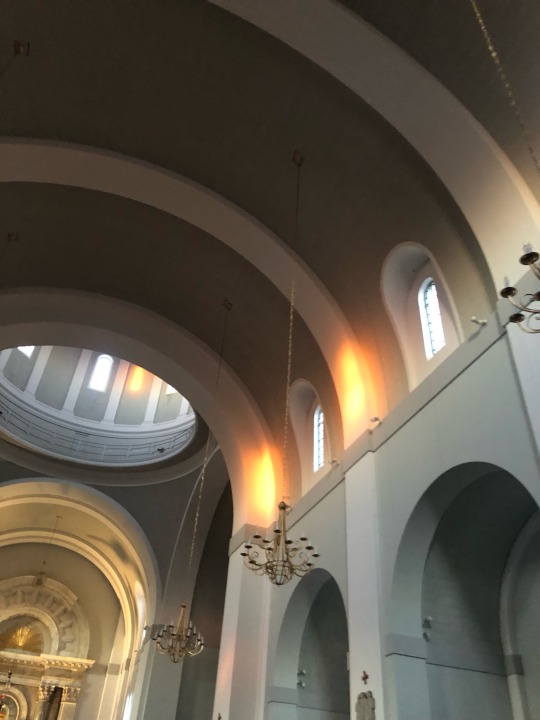

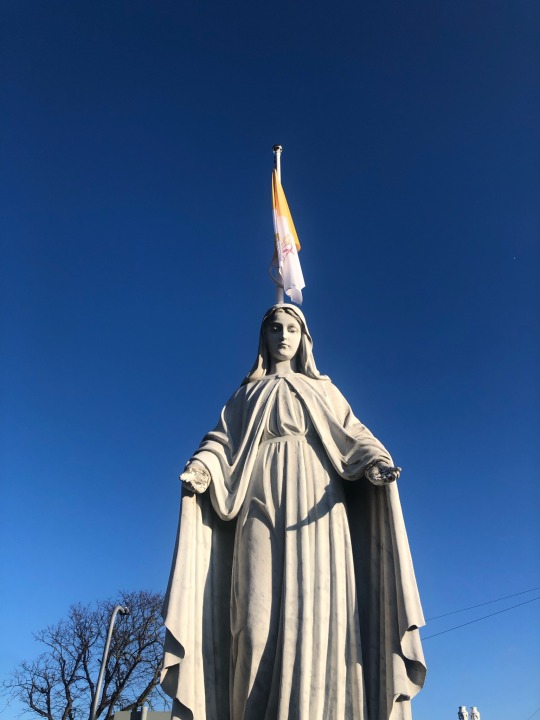
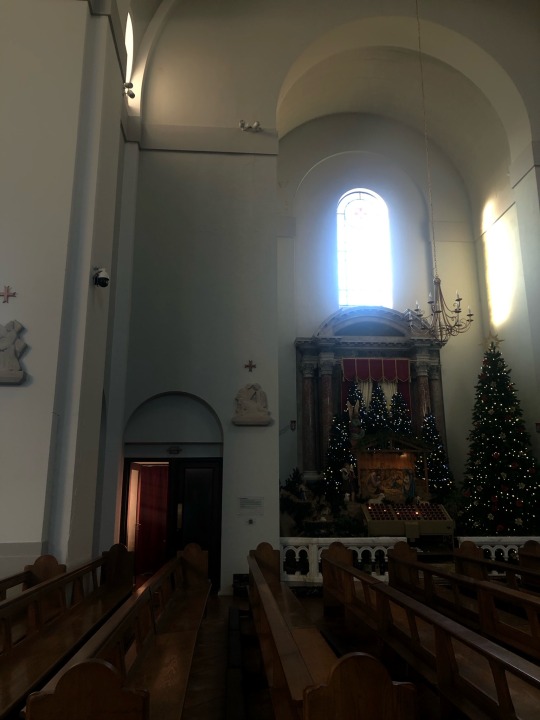
A good day at Church♥️
#dome of home#domeofhome#ss Peter paul and st Philomena#catholic#jesus#church#love#christmas#mother mary#icksp
2 notes
·
View notes
Text
Stare Miasto Kraków Poland

View On WordPress
#Bishop Stanislaus Patron Saint of Poland#Eyeless Head Sculpture Igor Mitoraj#Hejnał Mariacki Trumpet Signal#Igor Mitoraj Polish Artist and Sculptor#King Sigismund I the Old#Kraków Market Square#Kraków Old Town#Rynek Główny#Sigismund Bell#St. Mary&039;s Basilica Krakow#St. Peter & Paul&039;s Church Kraków#St. Stanislaus#Stare Miasto#Wawel Castle#Wawel Hill#Wawel Royal Cathedral
0 notes
Text

0 notes
Text
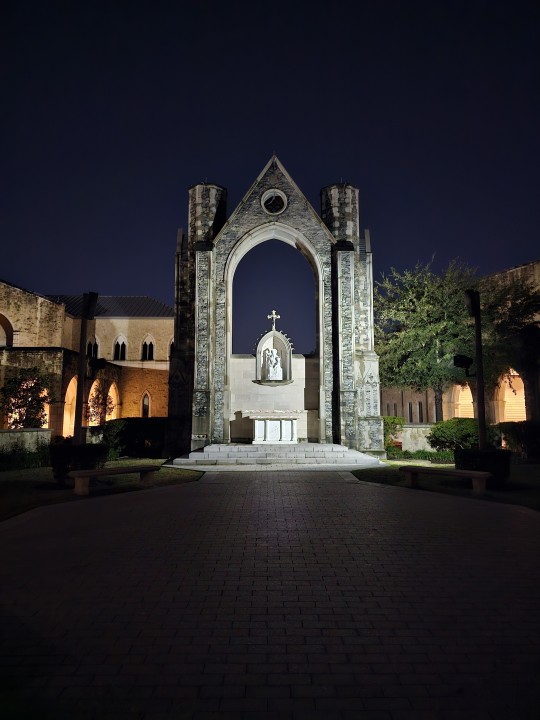
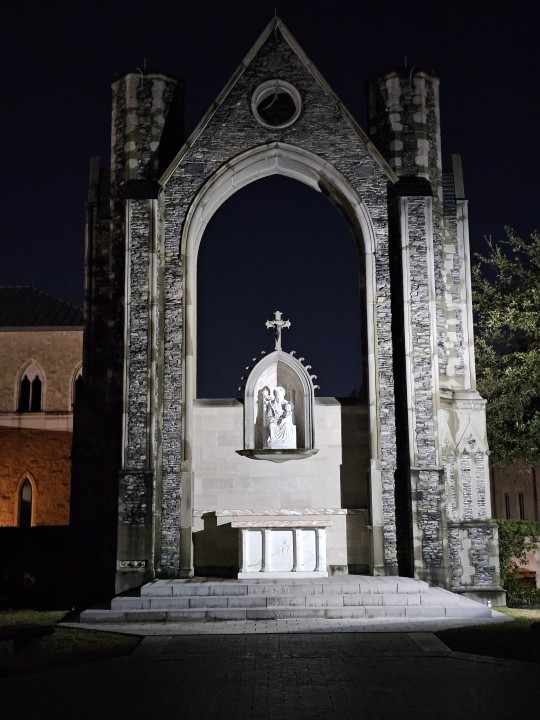
Shrine to the Virgin Mary at the Cathedral of Our Lady of Walsingham in Houston, Texas.
#my post#catholic church#roman catholic#virgin mary#our lady of walsingham#cathedral#catholic#houston#texas#mine#personal ordinariate of the chair of st peter
1 note
·
View note
Text
Named Angels
Fallen angels are not included. Neither are gnostic angels because I'm tired.
Aker: Named in the Greek Apocalypse of Ezra as one of the nine angels who will govern at the end of the world.
Al-Khidr: Also known as al-Khadir, Khader, Khidr, Hidr, Khizr, Kathir, Khazer, Khadr, Khedher, Khizir, Khizar, or Khilr. The Servant of God whom Moses accompanies in the Quran is identified as Al-Khidr by Islamic scholars.
Ambriel: Ambriel is an angel associated with the month of May.
Arariel: Described in the Talmud as the angel in charge of the waters of the Earth.
Ariel: An angel in Jewish and Christian mysticism. Ariel has dominion over beasts, creative forces, the North, and elemental spirits.
Arphugitonos: Named in the Greek Apocalypse of Ezra as one of the nine angels who will govern at the end of the world.
Artiya'il: An angel appearing in the hadith. Artiya'il removes grief and anxiety from humans.
Atid: One of two angels in Islamic tradition who records a person's actions. This record is used to confront each person on the Day of Judgment.
Azrael: The angel of death. Azrael is one of the four archangels in Islam.
Beburos: Named in the Greek Apocalypse of Ezra as one of the nine angels who will govern at the end of the world.
Camael: Also known as Chamuel, Khamuel, Camiel, Cameel and Camniel. One of the twelve Kabbalah angels, Camael is assigned to the fifth sephirah in the tree of life.
Cassiel: Also known as Qafsiel or Qaspiel. In Jewish and Christian mysticism, Cassiel is described by various roles, such as the angel of Saturn the angel of the moon, the angel of tears, and the angel of temperance. Cassiel is sometimes said to preside over the death of young men.
Dobiel: Also known as Dubbiel. Dobiel is the guardian angel of Ancient Persia.
Gabriel: An angel who announces God's will to men. Gabriel is considered in archangel in Jewish, Christian, and Islamic traditions. Gabriel appears to Daniel to explain his prophetic visions. Gabriel foretold the birth of John the Baptist to Zechariah and the Annunciation of Jesus to Mary. Gabriel appeared twice to Muhammad. In the church of Jesus Christ of Latter Day Saints, Gabriel lived a mortal life as the prophet Noah. Gabriel was named in the Greek Apocalypse of Ezra as one of the nine angels who will govern at the end of the world.
Gabuthelon: Named in the Greek Apocalypse of Ezra as one of the nine angels who will govern at the end of the world.
Haniel: Also known as Hananel, Anael, Hanael or Aniel. Haniel is sometimes listed as one of the seven archangels. In Kabbalah, Haniel is associated with the seventh sephirah.
Jegudiel: Also known as Iehudiel. Jegudiel is one of the seven archangels of the Eastern Orthodox Church tradition. Jegudiel is the patron saint of hard work and leadership and is often depicted holding a whip (as a punishment for sinners) and a crown (as a gift for the righteous).
Jerahmeel: Also known as Jeremiel, Eremiel, or Ieremihel. Jerahmeel is recognized as an archangel in Lutheran, Angelican, and Orthodox traditions. Jerahmeel is said to comfort the righteous dead in the Bosom of Abraham, or to guard heaven with St. Peter.
Jophiel: Also known as Dina, Iophiel, Iofiel, Jofiel, Yofiel, Youfiel, Zophiel, or Zuriel. In Anglican tradition, Jophiel is an archangel and in Kabbalah, Jophiel is associated with the sephirah chokmah. Some sources list Jophiel as the angel who guards the garden of Eden with a flaming sword.
Kalqa'il: Kalqa'il is an Islamic angel who guards the entrance of the fifth heaven.
Lailah: An angel appearing in the Talmud. Lailah is associated with conception, pregnancy, and the night.
Maalik: An Islamic angel of hell. Maalik carries out God's punishment on wrongdoers.
Metatron: Described in the Talmud as the heavenly scribe, Metatron is allowed to sit in the presence of God to record the deeds of Israel. Metatron was mistaken by Elisha ben Abuyah for a deity, and was subsequently lashed 60 times with a fiery rod to demonstrate that the Metatron was an angel and could be punished, unlike a god. In mystic writings, Metatron is the form Enoch took after his ascension. In Islam, Metatron is the angel of the veil and alone knows what lies beyond it.
Michael: Also known as Mika'il or Mikal. The prince of Israel and prince of the Heavenly Host. Michael is regarded as an archangel in Jewish, Christian, and Islamic tradition, and is the only angel explicitly identified as an archangel in the Christian Bible. In the book of Daniel, Michael fought the prince of Persia. In Revelation, Michael fought Satan and cast him out of heaven. Michael and Gabriel are the angels said to have shown Muhammad paradise and hell. In Jewish tradition, Michael prevented the sacrifice of Isaac by providing a ram. Seventh Day Adventists and Jehovah's Witnesses believe Michael is another name for Jesus in heaven. In the Church of Jesus Christ of Latter Day saints, Michael is the same person as Adam. Michael is named in the Greek Apocalypse of Ezra as one of the nine angels who will govern at the end of the world.
Moroni: In angel in the Church of Jesus Christ of Latter Day Saints. Moroni was the guardian of the golden plates from which Joseph Smith wrote the Book of Mormon, and appeared to Smith numerous times.
Muriel: Muriel is a Domination, a class of angel in the second angelic sphere. Muriel is associated with the month of June.
Nuriel: Regarded in some traditions as the same being as the angel Uriel. Nuriel is the angel of hailstorms and commands an army of 500,000 angels made of water and fire.
Pahaliah: Pahaliah is the angel of Redemption. Pahaliah is a throne, an class of angel in the first angelic sphere.
Puriel: Puriel accompanied Abraham on a journey to heaven. Puriel is tasked with examining the souls of those brought to heaven.
Raphael: Known in Islam as Israfel or Israfil. Raphael is regarded as an archangel in Jewish, Christian, and Islamic traditions. It is believed that Raphael is the angel in the Gospel of John who stirs the pool of Bethesda. In Islam, Raphael will blow the trumpet which signals the Day of Judgment, and the hadith lists him as the angel closest to God. Named in the Greek Apocalypse of Ezra as one of the nine angels who will govern at the end of the world.
Raqib: One of two angels in Islamic tradition who records a person's actions. This record is used to confront each person on the Day of Judgment.
Raziel: Also known as Gallitsur. Raziel is the angel of secrets and mysteries, and the keeper of all magic. In Kabbalah, Raziel is associated with the sepirah chokmak.
Riḍwan: Also known as Riswan. Riḍwan is an Islamic angel who guards the gates of heaven.
Sabrael: Sabrael is an angel appearing in the apocryphal works the Testament of Solomon and 3 Enoch.
Sachiel: Also known as Sariel, Suriel, Suriyel, Sikhael, Sixael, Satquel, Satquiel, Saquiel, Seriel, Sauriel, Saraqael, Sarakiel, Suruel, Surufel, Souriel, or Sachquiel. Sachiel is a cherub who is associated with charity and wealth.
Sahaquiel: Listed as one of the archangels in the Third Book of Enoch. Sahaquiel is attended by "496,000 myriads of ministering angels."
Samkhiel: An angel of Gehenna, Samkhiel is the angel of destruction. Samkhiel torments the wicked to cleanse their souls and eventually reuinte them with God.
Sandalphon: An archangel in mystical traditions of Judaism and early Christianity. Sandalphon is said to gather prayers and bring them to God. Some sources regard Sandalphon as an angelic ascension of Elijah.
Sarathiel: Also known as Serathiel. Sarathiel is an archangel in the Oriental Orthodox tradition.
Selaphiel: Also known as Sealtiel, Selatiel, or Selathiel. Selaphiel is regarded as an archangel in the Byzantine Catholic and Greek Orthodox traditions. Selaphiel is sometimes viewed as the angel in Revelation who offers people's prayers to God.
Uriel: Also known as Phanuel. Uriel is often depicted as a cherub and is the angel of repentance. Uriel is regarded as an archangel in Russian Orthodox, Eastern Orthodox, Ethiopian Orthodox, and Anglican traditions, as well as in Kabbalhah. Named in the Greek Apocalypse of Ezra as one of the nine angels who will govern at the end of the world.
Uziel: Also known as Usiel. Uziel is an archangel in 3 Enoch.
Yahoel: Also known as Jahoel, Jehoel, or Yaoel. Yahoel is charged with destroying idolators and restraining the Leviathian. Some sources list Yahoel as the chief angel of the Seraphim. Another lists Yahoel as one of the names of Metatron.
Zadkiel: Also known as Hasdiel. In Kabbalah, Zadkiel is an archangel associated with the fourth sephirah.
Zaphkiel: Also known as Tzaphqiel, Tzaphkiel, Zaphchial, Zaphiel, or Zelel. Zaphkiel is the chief angel of the thrones and is regarded in some traditions as the same angel as Raphael.
Zebuleon: Named in the Greek Apocalypse of Ezra as one of the nine angels who will govern at the end of the world.
Zephaniel: Zephaniel is the chief angel of the Ishim in Kabbalah.
Zerachiel: Also known as Zachariel, Zakhariel or Saraqael. An angel who leads souls to judgment and is set over those who "sin in the spirit."
Zotiel: Zotiel is an angel mentioned in the Book of Enoch.
157 notes
·
View notes
Text
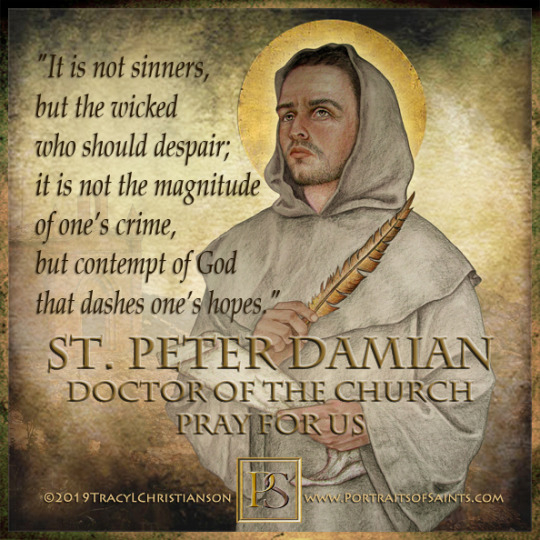
Saint Peter Damian
Doctor of the Church
1007-1072
Feast Day: February 21 (New), February 23 (Trad)
Saint Peter Damian was born into a noble but poor family, orphaned young and left in the hands of a brother who treated him as a slave. Peter’s other brother, a priest, provided Peter with an extensive education in theology and canon law. Peter joined a strict order of Benedictines and lead an austere monastic life of prayer, writing treatises, hymns, and letters. He had a great devotion to the Virgin Mary. Eventually, he was made abbot of the order, then a Bishop, and lastly a papal legate. He was a chief forerunner of the Hildebrandine reforms, a peacemaker and troubleshooter, condemning simony and rampant clerical sexual unchastity during the most scandal-plagued 11th-12th c. of the Western Church. St. Peter died of a fever, surrounded by monks in prayer.
Prints, plaques & holy cards available for purchase here: (website)
39 notes
·
View notes
Text
Every day during that month-long visit in Rome was fascinating, but one day in particular was important. I borrowed a journalist's identification card and went into St. Peter's for one of the major sessions. Sitting in the section reserved for the press, I saw in the distance a multitude of cardinals and bishops—old men in crimson dresses. In another section of the basilica were the "auditors": a group which included a few Catholic women, mostly nuns in long black dresses with heads veiled. The contrast between the arrogant bearing and colorful attire of the "princes of the church" and the humble, self-deprecating manner and somber clothing of the very few women was appalling. Watching the veiled nuns shuffle to the altar rail to receive Holy Communion from the hands of a priest was like observing a string of lowly ants at some bizarre picnic. (In retrospect it seems to have been an ant-poisonous picnic.) Speeches were read at the session, but the voices were all male, the senile, cracking whines of the men in red. The few women, the nuns, sat docilely and listened to the reading of documents in Latin, which neither they nor the readers apparently understood. When questioned by the press afterward, the female "auditors" repeatedly expressed their gratitude for the privilege of being present. Although there were one or two exceptions, for the most part they were cautious about expressing any opinion at all. Although I did not grasp the full meaning of the scene all at once, its multileveled message burned its way deep into my consciousness. No Fellini movie could have outdone this unintended self-satire of Catholicism.
-Mary Daly, The Church and the Second Sex
91 notes
·
View notes
Text
✨ 15 days of Princess Anne ✨
August is Princess Anne’s birth month and her 73rd birthday is on the 15th so until then we will look at her fascinating life, one photo for every year!
The 2000s

2000 Princess Anne sat behind a stall at the Gatcombe Park Horse Trials on 6th August 2000.

2001 Princess Anne visiting the King's Royal Hussars of which she is Colonel in Chief on 21st June 2001.

2002 Princess Anne with her husband Commodore Tim Laurence at the Royal Albert Hall in London for the Royal British Legion Festival of Remembrance on 9th November 2002.

2003 Princess Anne, Tim Laurence and Peter Phillips celebrating Zara Phillips when she placed second at the Burghley Horse Trials in September 2003.

2004 Princess Anne and her husband Commodore Tim Laurence at Kiri Te Kanawa's 60th birthday reception at Marlborough House, on 31st March 2004.

2005 Princess Anne embracing her daughter Zara Phillips as Peter Phillips watches on after she won gold at the European Eventing Championships at Blenheim Palace on 11th September 2005.

2006 Princess Anne at The Festival of Trees auction party for Save The Children, at the Natural History Museum in London on 5th December 2006.

2007 1. Princess Anne and her husband Tim Laurence giving each other serious heart eyes at the Festival of British Eventing on 5th August 2007.
2. Princess Anne and her husband Tim Laurence dancing ever so close to each other at King Harald's 70th Birthday Gala Dinner at Royal Palace, Oslo on 24th February 2007.
3. Princess Anne and Tim Laurence walking arm in arm to the Christmas Day service at St. Mary Magdelene Church at Sandringham, on 25th December 2007.
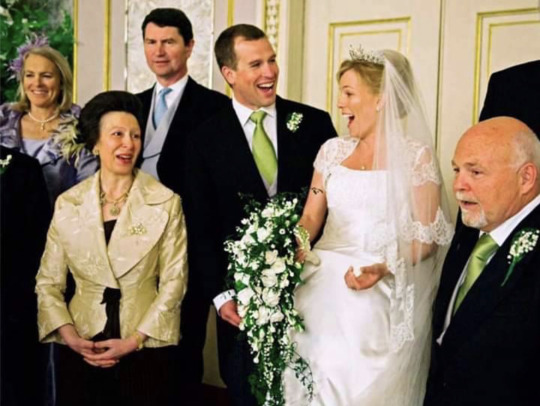
2008 At the photoshoot at Windsor Castle after the wedding of Peter Phillips and Autumn Kelly, which was held at St George’s Chapel on 17th May 2008.

2009 Princess Anne with the Irish Guards at the St Patrick's Day Parade at Victoria Barracks, Windsor on 17th March 2009.
#just a reminder that the paper’s thought they were having ‘marriage problems’#i mean just look at them#they’re so in love 😭😭#the heart eyes#especially in the 2004 and 2007 photos#my babies 😭😭#princess anne#princess royal#15 days of anne
65 notes
·
View notes
Text
After the noon mass, we got to do the novena to the immaculate conception. There were only few people, I was able to join them in singing the Pange Lingua!! Felt amazing.


#pange lingua#at the church#dome of home#domeofhome#immaculate conception#novena#Mother Mary#saints Peter and Paul and st Philomena church#church diaries
1 note
·
View note
Text
books i read in 2023
my goal was to read a book a week and while the timeline wasn't perfectly even, i did manage to get it to add up (and then some!). this year i focused on religion and philosophy as well as classics (of which im counting both as traditional "ancient or pre-modern famous and outstanding" types of books, but also famous more modern books). i also bolded some books that were really good in my opinion that have really stuck with me so if you are interested in the genre i'd suggest those
st joan by bernard shaw (play)
mary and your everyday life by bernard haring (theology)
theology of liberation by gustavo gutierrez (theology)
magnificat by elizabeth ruth obbard (theology)
piedras labradas by victor montejo (poetry)
the boy who was raised as a dog by bruce perry and maia szalavitz (psychology)
4 great plays by ibsen - the dollhouse, ghosts, the wild duck, and an enemy of the people by henry ibsen (plays obvi)
the night of the iguanas by tennessee williams (play)
being logical by dq mcinerny (idk sociology maybe? it was about recognizing and avoiding bad-faith arguments and logical fallacies)
the alchemist by paolo coelho (classics)
frankenstein by mary shelly (classics)
an american tragedy by theodore dreiser (classics)
is this wifi organic? by dave farina (idk how to classify this one either but it was also about recognizing bad-faith arguments, specifically when it comes to pseudoscience)
the nicaraguan church and the revolution by joseph muligan (theology, history)
catholic social teaching: our best kept secret by peter henriot, edward deberri, and michael schultheis (theology)
beowulf (classics)
sapiens by yuval noah harari (anthropology)
the church and the second sex by mary daly (theology)
mary in the new testament edited by raymond brown, karl donfried, joseph fitzmyer, and john reumann (theology)
a catholic devotion to mary by oscar lukefahr (theology)
1001 nights / arabian nights trans. sir richard burton (classics)
a house on mango street by sandra cisneros (poetry)
primary source readings in catholic church history edited by robert feduccia and nick wagner (theology)
doing faithjustice by fred kammer, sj (theology)
winds of change by isaac asimov (sci-fi)
the sound and the fury by william faulkner (classics)
una ciudad de la españa cristiana hace mil años by claudio sanchez-albornoz (history)
the glass menajerie by tennessee williams (play)
reinventing the enemy's language by joy harjo and gloria bird (indigenous women writers anthology)
the great gatsby by f scott fitzgerald *reread* (classics)
the bell jar by sylvia plath (classics)
the kite runner by khaled hosseini (classics)
one nation, under gods by peter manseau (history)
development as freedom by amartya sen (economic / political philosophy)
women in ministry: four views edited by bonnidell and robert g clouse (practical theology)
mother of god: a history of the virgin mary by miri rubin (theology / history)
a study in scarlet and the sign of four by sir arthur conan doyle (classics)
adventures of sherlock holmes by sir arthur conan doyle (classics)
the casebook of sherlock holmes by sir arthur conan doyle (classics)
the valley of fear by sir arthur conan doyle (classics)
the memoirs of sherlock holmes by sir arthur conan doyle (classics)
the return of sherlock holmes by sir arthur conan doyle (classics)
the hound of the baskervilles by sir arthur conan doyle (classics)
his last bow by sir arthur conan doyle (classics)
the fundamentals of ethics, fourth edition by russ shafer landau (philosophy)
dracula by bram stoker (classics) (yes i'm counting dracula daily)
desde mi silencio by carmen gomez (poetry)
happiness in this life, excerpts from the homilies of pope francis (theology)
the vigilante / the snake / the chrysanthemums by john steinbeck (classics)
quest for the living god by sister beth johnson *reread* (theology)
the adventures of tom sawyer by mark twain (classics)
the adventures of huckleberry finn by mark twain (classics)
the boys in the boat by daniel james brown (history)
and that's all folks, ending the year with some classics, plus my mom insisted i read the boys in the boat while im home for christmas because she wanted to see the movie lol. i got so many books for christmas so i'll be startin off strong next year too, and my goal is finishing my collection of john steinbeck, by which i mean obtaining as well as reading everything i can find by him. here's my list from 2022 and i'll see you next year
#books#bookblr#reading#literature#classic lit#john steinbeck#philosophy#religion#classics#sherlock holmes#mystery#psychology#theology#history#poetry#sociology
23 notes
·
View notes
Photo



A 14th-Century Papal Bull Discovered in Poland
A lead seal found in northwestern Poland has been identified as a rare papal bull from the reign of Pope Boniface IX (1350-1404). It was discovered in 2021 north of a former cemetery in the village of Budzistowo by metal detectorists with the PARSĘTA Exploration and Search Group. Dirt and corrosion made it difficult to identify at first. Specialists in Kraków cleaned and conserved it, revealing the inscription that marks it as the seal of Boniface IX.
Bullae were round seals, usually made of lead, that were hung on silk strings affixed to the parchments of official proclamations and documents. They were legally valid and highly recognizable signatures. Metallurgic analysis found that this one was made of pure lead derived from galenite deposits in Cyprus, Sardinia, Greece and Spain. This composition indicates the bull is original, not a later copy.
The reverse inscription reads: BONI/FATIUS/PP:VIIII. The obverse features the images of Saint Peter and Saint Paul identified by the inscription SPASPE above their heads.
In the 9th century, what is now Budzistowo was founded by Pomeranian tribes as the fortified settlement of Kołobrzeg. The settlement was on the Parsęta River 2.5 miles from its mouth on the Baltic Sea, and was rich in salt, fish, iron ore and arable land. The Polish Piast dynasty conquered the area in the 10th century, and Kołobrzeg grew into a regional center of the trade in salt and salt-cured fish.
It became a seat of a bishopric in 1000, but the area would only become thoroughly Christianized in the 12th century. St Mary’s church was built at that time. It was converted into an abbey in the 13th century when German settlers founded a new town of Kołobrzeg on the Baltic and the former Pomeranian stronghold was renamed Old Kołobrzeg. A monastery for Benedictine nuns was then built in Old Kołobrzeg.
Historians hypothesize that the bull was kept at the Benedictine monastery, based on a reference in the comprehensive history of Kołobrzeg written by the 18th century Pastor Johann Friedrich Wachsen. He recorded that in 1397, Boniface issued a letter of indulgence for the Benedictine nuns. It guaranteed a full indulgence to anyone who visited the local church.
With no relic relating to the monastery surviving to this day, [Dr Robert Dziemba, the head of the Kołobrzeg History Department,] says that if it is proved that this bull is the same one referenced by Wachsen it would be nothing short of “a historical revelation”. […]
Dziemba speculates that this particular papal bull may have been lost in the 16th century.
“After the 1534 congress in Trzebiatów introduced Lutheranism to Pomerania, the document simply lost its value,” he said. “Maybe the bull was thrown out when the duchy took control of the monastery as a result of this congress – but maybe it was lost centuries later. We will probably never know when and why it was discarded.”
The conserved bull has gone on display in the Museum of Arms in Kołobrzeg.
#A 14th-Century Papal Bull Discovered in Poland#Pope Boniface IX#lead seal#metal detecting#archeology#archeolgst#ancient artifacts#history#history news#ancient history#ancient culture#ancient civilizations#medieval history#middle ages#dark ages
93 notes
·
View notes
Text
St. Mary Magdalene, the Penitent and Apostle to the Apostles

I love the following excerpt from St. Anselm in his prayer to Mary Magdalene:
"But you, most holy Lord,
why do you ask her why she weeps?
Surely you can see;
her heart, the dear life of her soul, is cruelly
slain.
O love to be wondered at;
O evil to be shuddered at;
you hung on the wood, pierced by iron nails,
stretched out like a thief for the mockery of wicked men;
and yet, ‘Woman,’ you say, ‘why are you weeping?’
She had not been able to prevent them from killing you,
but at least she longed to keep your body for a while
with ointments lest it decay.
No longer able to speak with you living,
at least she could mourn for you dead.
So, near to death and hating her own life,
she repeats in broken tones the words of life
which she had heard from the living.
And now, besides all this,
even the body which she was glad, in a way, to have kept,
she believes to have gone.
And can you ask her, ‘Woman, why are you weeping?’
Had she not reason to weep?
For she had seen with her own eyes
if she could bear to look
what cruel men cruelly did to you;
and now all that was left of you from their hands
she thinks she has lost.
All hope of you has fled,
for now she has not even your lifeless body
to remind her of you.
And someone asks,
‘Who are you looking for? Why are you weeping?’
You, her sole joy,
should be the last thus to increase her sorrow.
But you know it all well, and thus you wish it to be,
for only in such broken words and sighs
can she convey a cause of grief as great as hers.
The love you have inspired you do not ignore,
And indeed you know her well,
the gardener, who planted her soul in his garden."
Mary Magdalene was like you and I...a woman with a past, with grave sins, yet she was beloved by our Lord - to such an extent that he revealed himself not to Peter, the rock on who Christ would build his Church, but to her. The woman who washed his feet with her tears and anointed them with the most expensive oil. The women who Jesus praised for her devotion and love.
I have never been fond of the way the Church portrays Mary Magdalene as a penitent whore for it is neither historically or scripturally accurate, but rather she is to be an inspiration for all of us, that no one is too far from the love of our Lord.
May I also weep when I stray from the love of Christ and have my heart leap for joy when he calls my name. St. Mary Magdalene, pray for us!
#cunning folk#folk catholicism#mary magdalene#ceremonial magic#grimoires#magick#catholic saints#witchcraft#occultism
50 notes
·
View notes
Text


Grandpa Tim Laurence walking back from St Mary Magdalene Church with Savannah Phillips, Isla Phillips, Lena Tindall and Peter Phillips on 25 December 2022
#grandpa tim#aw I’m so sad anne couldn’t go#savannah phillips#isla phillips#lena tindall#peter phillips#princess anne#princess royal#british royal family#brf#annelets
130 notes
·
View notes
Text
A queen's position privileged her relationship with the church hierarchy. This allowed visible material expression of her personal devotion, and Elizabeth Woodville, though hardly renowned today for her piety, was a case in point. Some of her requests were for very private purposes, for example (in 1474) to have a portable altar. Others applied outside the court. In 1477 she gained, at her own petition, an indult to enter Carthusian houses of royal foundation, with eight to ten women servants, to hear masses and other divine offices; two years later she and the king were granted a licence to hear services within the Carthusian house at Sheen. Crawford (1985) uses this evidence to credit Elizabeth with a piety "beyond the purely conventional", but does not show how these actions prove it, given that the queen, any queen, had a far greater range of resources and opportunities to express piety than most women. Crawford also shies away from reconciling this comment with her earlier assertion that "many of Elizabeth's actions show her to have been grasping and totally lacking in scruple"
Elizabeth Woodville's devotion to the Feast of the Visitation (also adduced by Crawford) had complex implications. The main objective of her 1480 petition to the pope regarding this feast was that the people of England, including herself, not be deprived of the papal indulgences associated with its celebration; this was an issue because the date of the newly instituted feast conflicted with some traditional English ones. The pope declared an arrangement whereby neither observance would be lost. Elizabeth displayed even more of a sense of mission in requesting extra indulgences for practitioners of the Salutation of the Virgin, apparently wishing "the devotion of the faithful of the realm for the said Salutation to be increased more and more". But however important this was for contemporary English piety, and however useful for a broader understanding of Elizabeth Woodville, it does not seem to take us far "beyond the purely conventional". More thought-provoking, perhaps, is the queen's surrender of her parts of two Worcestershire manors in 1479, which she granted to the monastery of St. Peter's, Westminster, with specific, detailed instructions for the observances she desired on behalf of the royal family. The same year she granted the monastery of Jesus of Bethlehem 48 acres of land out of her manor of Sheen. One wonders why Elizabeth undertook almost all her religious projects within a brief period, 1477-80. Had the necessary resources finally come her way, or was there a more personal reason -- for example, the death of her first royal son, George, at the age of two, early in 1479?
It is safe to assume that for any powerful woman of the fifteenth century, piety and patronage were unavoidably related. One of Elizabeth Woodville's first acts of intercession, in 1466, was to gain a royal licence for the founding of a London priestly fraternity. Despite Crawford's contrary assertion, at least one of Elizabeth Woodville's household clerics became a bishop: her confessor Edward Storey, later bishop of Carlisle. The queen maintained this ecclesiastical connection, later appealing to the pope on Storey's behalf. As for Elizabeth of York, her "singular devotion" for the Cistercian monastery of St Mary, Woborn, led her, toward the end of her life, to send the pope a "most instant request" for the union of that house to the parish church of Salisbury, but her wish was accompanied by those of the bishop, the dean, the archdeacon of Buckingham and the chapter of the church, all by the "will" of the king. This may indicate that the queen's word by itself would not have guaranteed the success of the petition.
Queenly patronage might still be much more direct than this. Elizabeth Woodville was granted the right of presentation to the hospital or free chapel of St. Anthony, London, in 1468. In 1499 Elizabeth of York wrote to the prior of Christ Church, Canterbury, asking for a literal carte blanche of presentation to the highly desirable, centrally located living of All Hallows, Gracechurch Street, London, for which Elizabeth Woodville and her husband had also wanted preferment. The prior was to leave a blank on the certificate which the queen would fill in with the name of her candidate (Richard Southayke received the benefice). Both queens were granted rights of presentation to canonries and prebends in the royal chapel of St. Stephen, Westminster, but these were often shared, e.g. Elizabeth of York's grants of 1486 with the bishop of Ely, or of 1487 with four others. They might also be carefully qualified, applying only to the next vacancy, or to "become void after the king, or some one by his grant, has presented to one canonry and prebend in the same chapel". And even a queen could have competition; in 1500 the university of Oxford received letters from Elizabeth of York, the prince of Wales, and the king's mother recommending three different candidates to the same position.
The queen was not restricted to court or high-profile appointments, and she might exercise her influence even over livings to which she had no legal claim. In 1469 John Pas ton II informed his son that the "free chapell in Caster", a Paston property, was to be given to a chaplain of Elizabeth Woodville, "Master John Yotton", "at the speciall request of the Qwen and othere especiall good lordes of myn". This seems to have been contrary to Paston's original intentions for the living; moreover, the queen expected a higher stipend for her candidate than Paston was willing to provide. 120 Whatever salary was agreed on was evidently not enough to keep Yotton at his post, since before long "a prest to syng in Caster" was again needed; John Paston III advised his father that "now thys parlement tyme ... I thynk [Yotton] shalbe awaytyng on the Qwen. " Elizabeth of York claimed to be the exclusive patron, as queen, of the hospital of St Katherine-by-the-Tower, and attempted at least twice to obtain a plenary indulgence for it [...].
Naturally, a queen's ecclesiastical patronage could have less spiritual motives, whether personal or political. In 1479 Elizabeth Woodville's brother Lionel was granted a papal dispensation to hold four simultaneous benefices, though this was at the petition of both king and queen. The papal "relaxation" she obtained for those visiting St. Augustine's Church, Huntingdon, is also open to cynical interpretation, since one of the conditions is that the visitors "give alms for the maintenance of its buildings and ornaments". It is less obvious why, in 1488, a papal inhibition of "disturbances in the matter of the right of succession, etc." among Irish ecclesiastics, was said to originate in the concern of both Henry VII and Elizabeth of York, though we should note that the queen's chancellor was an Irish peer. Elizabeth Woodville's record of "protectyng and defendyng the libertes and ffrauncheses" of Westminster Abbey, and her "bounteous" donations for its repairs, stood her in good stead when she wished to lease a house there.
Pious patronage might extend to literary patronage, and the prime example of this for our purposes is William Caxton. The dedication to Caxton's printing of the Fifteen Oes of St. Bridget of Sweden states that the book was printed at the joint commandment of Elizabeth of York and the king’s mother. The reason for this patronage is unclear, since there is nothing especially queenly or even feminine about the content of these prayers. Of course, Lady Margaret's active piety is well known, and it has been suggested that the queen was her protegee in the patronage of devotional literature. In 1477 Caxton had dedicated his Boke of the histories of Jason to the prince of Wales "by [the king's] licence and congye [and] by the supportacion of... the Quene", Elizabeth Woodville; his reference to the new translation also formally acknowledges both king and queen. Contrary to what one might suppose, the reference to the queen is probably more meaningful than that to the king; Woodville patronage had been important in Caxton's early career on his return to England, and his connection to Elizabeth was probably the critical one.
It is reasonable to suppose that in an age when learning was still so strongly connected to the church, a queen's educational benefactions might fall under the rubric of pious good works. We lack any other substantiated motive for Elizabeth Woodville's patronage of Queens' College, Cambridge, which is first explicitly mentioned in 1465, even before her coronation. Elizabeth's main accomplishment, in 1473, was to give the college its statutes (never provided by the original foundress, Margaret of Anjou), in which she described herself as vera fundatrix and stated in part "the duties of our royal prerogative require, piety suggests, natural reason demands, that we should be especially solicitous concerning those matters whereby the safety of souls and the public good are concerned, and poor scholars ... are assisted". The queen shared in the power to alter or rescind any of the provisions of these statutes. Unfortunately no records remain of any further direct benefaction to the college from Elizabeth Woodville; her daughter's involvement is even more obscure except for a fragmentary "mandate for selecting ... Billington to a fellowship or scholarship" Elizabeth Woodville apparently also gave "large sums" to Eton College, probably after 1477 (when Henry Bost, the provost who allegedly influenced her, was elected).
Queens could, of course, be involved in more overtly worldly patronage, often in an intercessory role. A well-documented example is the involvement of the Mercers' Company of London with Elizabeth Woodville in the late 1470s. The queen first interceded for the merchants in 1478, regarding a "fraye" between the king's servants and some London citizens. By December 1479 the company had a much more serious problem; it owed the king an onerous sum for non-payment of its subsidy, and for its alleviation it looked to both Elizabeth and the king's chamberlain (William, Lord Hastings). From the beginning the queen's abilities were recognized as exceptional, not only by the company but by Hastings, who encouraged the merchants to cultivate her rather than himself. In January 1480, after the merchants had given "grete lawde & thanke" to their court connections, including Thomas Grey and "the lord Ryvers", they reported that Hastings had cautioned them "to be more secrete of theyre frendes and that non avaunt be made who that is frendly and laboureth for us Except the quenes good grace oonly, whiche that is, & always hath ben, oure verrey good & gracious lady in the said mater & c." Evidently dealing with the queen alone would get the company into less political trouble than open lobbying of her relatives -- an indication, perhaps, that Elizabeth was not considered one and the same with "the Woodvilles".
By 8 January 1480, the queen had managed to convince Edward to forgive 500 marks (£333 6s. lOd.) of the fine, and the company decided that she was their most promising option; four days later the fine was further reduced by the same amount. Although this left the company still owing 3000 marks (£2000), which the king made clear was his final offer, the difference was significant enough to earn Elizabeth the merchants' gratitude. This episode helps to explain Elizabeth Woodville's membership in two London fraternities connected to the Skinners' Company. She was the fifth queen consort to belong to the Fraternity of Corpus Christi, and the book of the Fraternity of Our Lady's Assumption contains a painting of her in her coronation robes. Presumably this company had learned in the past that queenly connections were worth maintaining, and reasoned that to honour Elizabeth twice would be even more effective in keeping it in her good graces.
The queen's intervention was not limited to the business sector. In June 1467, Elizabeth Woodville wrote a sharply worded letter to the earl of Oxford when he failed to restore Simon Blyant to a disputed manor. Her involvement did not end with this gesture, for we know that the archbishop of York was to speak with her about it in August even though she had taken her chamber. Another landowner, Catesby of Hopsford, eventually appealed to the queen in a matter involving a number of lands, though we do not know the outcome. Where families were concerned, the queen's influence might help to undo a marriage as well as to arrange one. From October 1471 until at least April 1473 Elizabeth Woodville and her council were involved, at John Paston H's request, in trying to cancel his engagement to Anne Hawte. Difficulties might arise when an individual had no such convenient connection to the queen; the prior of Bromholm asked John Paston for help because he did not know how properly to make his appeal to Elizabeth Woodville for "certeyn tymber".
The queen's contact with cities was not defined solely by ceremonies of entry. In December 1467 the city of Coventry voted Elizabeth Woodville a gift of 100 marks (£66 13s. 4d.). Even if this was merely a New Year's gift, and not in response to any special situation, it may represent the city's recognition that it could be in their interest to pay tribute to the queen. For her part, Elizabeth made a gift of twelve bucks to Coventry in September 1474, not long after her visit there with the prince of Wales. The queen's dealings with Coventry were not a matter of mere courtesies. Three months later she wrote to the corporation to express her regret for the disturbance caused by one of the king's servants there. Elizabeth promised that the offender would be dealt with appropriately, and thanked the city for its recent kindness to her and the royal children. The point to take from this is that the relationship a queen might develop with a city could be quite independent of her husband, though useful to him. It was more effective for Elizabeth to communicate with Coventry even though the situation she addressed had nothing to do with her. Here we see queenly intercession operating, as it were, in reverse.
- Derek Neal, “The Queen’s Grace: English Queenship, 1464-1503″
#historicwomendaily#history#elizabeth woodville#elizabeth of york#15th century#wars of the roses#mine
38 notes
·
View notes